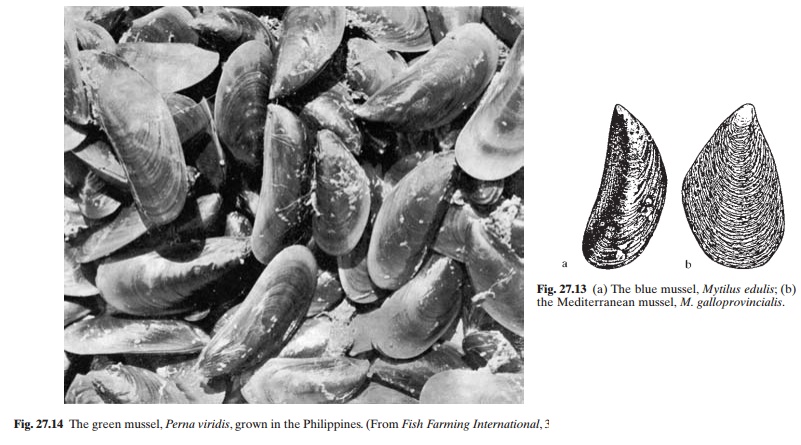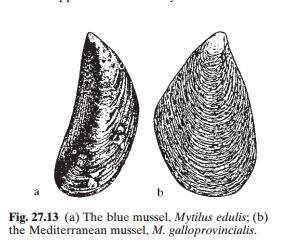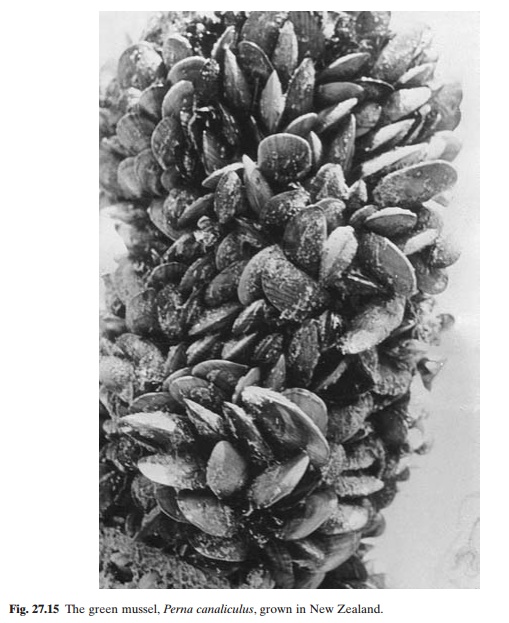Chapter: Aquaculture Principles and Practices: Oysters and Mussels
Mussels

Mussels
Mussels have traditionally been a well-accepted seafood in many
countries of Europe, particularly France, Italy and the Netherlands. But it is
only in the last few decades that the potential of their cultivation has
attracted any significant attention. The very high levels of production obtained
by raft culture in the rias (submerged river valleys or fjords) of Galicia in
Spain aroused the expectation that mussel culture may be a quick means of
solving the animal protein needs of the populations of the Third World.
Notwithstanding the fact that the productivity of the Galician Coast cannot be
dupli cated everywhere, and that many years of work will be needed to promote
and popularize mussels in many parts of the world, there is undoubtedly very
considerable potential for substantial increases in the production of mussels
for direct human consumption or as feed for other valued aquaculture species.

There are a number of species of mussels distributed in most parts of
the world, but the most important from the point of view of aquaculture
production is the blue mussel Mytilusedulis
(fig. 27.13). It is widely distributed andadapts itself to a variety of
ecological conditions. The Mediterranean mussel, M. galloprovincialis (fig.
27.13), is considered by someworkers to be the same as M. edulis, and the morphological
differences are well within the geographic variations observed in the species.
Irrespective of the taxonomic identity, there is very little difference in the
biological characteristics relevant to cultivation. Another groupof mussels of
importance in aquaculture includes species of Perna. The culture of the green mussel Perna viridis (= M. smaragdinus; M. viridis) (fig. 27.14)
has been practised inthe Philippines for several years. The Chinese

mussel culture is largely based on the blue mussel, but the green mussel
and the black mussel, M. crassitesta, are also of some
importance. Experimental culture of mussels in India includes the brown mussel,
P. indica. The green mussel cultured in New Zealand belongs to the
species P. canaliculus (fig. 27.15), and the main species in Venezuela is P. perna.

Like other bivalve molluscs, mussels are filter-feeders, feeding on
phytoplankton and suspended organic particles. In nature they live in shallow
water, attached to hard substrates.
However, they can displace themselves both horizontally and vertically
with the aid of the extensible foot, and attach to new substrates by the
production of new byssus threads. They
Related Topics